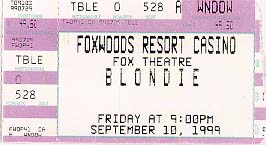Sometimes we take a fresh look at a product, with the thought of turning it into a service. This is especially attractive if sales of our product-as-a-product are less than planned. Here’s a short exploration of the opportunities and pitfalls in moving from a product model to a service model.
First, we’ll step through some successful service models including application hosting, transaction-based, and subscriptions. Then, sketch an example to highlight some of the advantages and challenges of services versus classic product sales.
Application Hosting
Also known as the ASP (Application Service Provider) model, application hosting runs customer applications from an external data center or Internet resource. Upshot.com does this for sales force automation; NetLedger offloads small business accounting and ERP; Instill manages supply chains for large foodservice operators.
Most ASPs fail, though. Competition is fierce and differentiation is rare. For example, thousands of email and web providers are fighting for the $6.00 I spend each month hosting mironov.com. (Remember Exodus and Corio?) Open source solutions and cheap hardware make generic hosted services a rush to the bottom.
Transaction-Based

Lots of services charge by the drink (or trade or trip or teleconference or session or mortgage quote). Usually, these companies are not really in the software business at all, but offer an explicit service. Schwab sells stock trades, even though they provide several slick client-server tools. iPass charges for worldwide broadband and dial-up access by the minute, after hiding some awesome software under the hood. Cellular services are the prime example of paying for “free hardware” one minute at a time.
You’ll notice, though, that service providers have to keep marketing to you. Newsletters and special offers are designed to encourage transactions. If you forget about them, they may just cease to exist. They also consider software a cost item — necessary but not a direct source of revenue.
Paying for Freshness
Finally, some software is only useful because it is current. Imagine Norton AntiVirus running last January’s infection profiles. Likewise, TurboTax will need a yearly forms upgrade as long as there are politicians in Washington. Smart marketers package subscriptions or updates for these rare beasts.
Most products can’t get away with “freshness dating.” Microsoft’s “Software Assurance” plan moves Windows toward a subscription model — and has infuriated customers. Corporate CTOs believe that operating software is a product that they buy rather than rent. We’ll see if Microsoft drives large segments of its frustrated buyers to LINUX desktops.
How About an Example?
Putting a little theory into action, imagine that you are the product champion for a hot new security verification tool. Your brainchild can inspect web-based .NET applications for the 20 most obvious security holes — vulnerabilities created by naive developers using Microsoft’s new app construction kit. Your sales team started selling this as a packaged product at $4000 per copy plus $1000 per year for updates (to cover the frequent discoveries of new .NET gaffes). Unfortunately, your quarterly revenue has not made the investors smile.
You could host this as a service and charge developers $200 per scan. With no upfront cash and no commitments from your target customers, who could possibly resist? Besides, every .NET story in InformationWeek highlights the need for your service.
Good news about this possible strategic shift:
- Very low entry prices can knock down sales barriers. Customers don’t pay large up-front license fees, and can be coaxed to sample your service with free trial offers.
- Services are a renewable resource. Customers buy them fresh each time.
- Good services are habit-forming. (That’s why we call them “users.” Most services give you a month free and hope to get you hooked.)
Of course, these benefits have immediate costs:
- Suddenly, your revenue model has slowed down. S-l-o-o-o-o-w-e-d. A customer has to use your scanning service 20 times to reach the original license fee. It might take 6 (or 12 or 18) months for an average customer to ring up $4000.
- Customers can walk away as easily as they arrive. Your security checker had better be terrific to earn the loyalty of users, and be trivially easy to operate. Expect to answer a flood of naïve support questions.
- Occasional users of your service will get a real bargain, and heavy users will demand deep discounts (or force you to sell them the original $4000 product). To make your numbers, you will need a much larger base of infrequent users than with a packaged software model.
Hmmmm. Not clear that shifting from product to service is a win here. If you’re having trouble finding enough .NET developers willing to buy a $4000 security testing packages, the problem may be bigger than service-versus-product.
SoundBytes
Picking a service model for your product may not be obvious. You need to put on your end customer thinking cap, then map out the revenue stream to make sure you’ll live long enough to succeed. Consider pricing tiers attractive to occasional as well as heavy users. Call me if you’re not sure what to do next.

